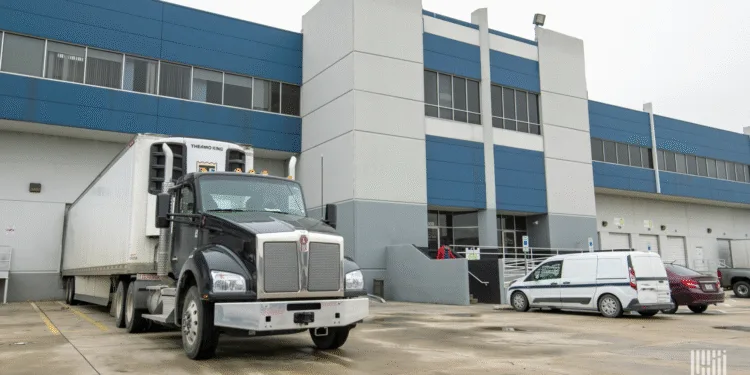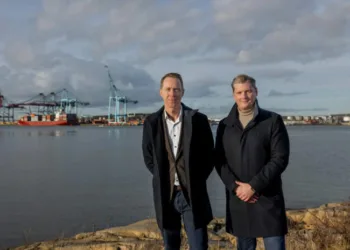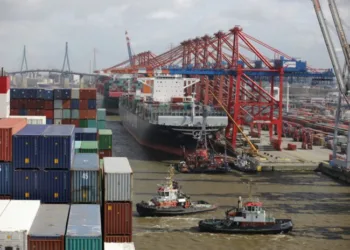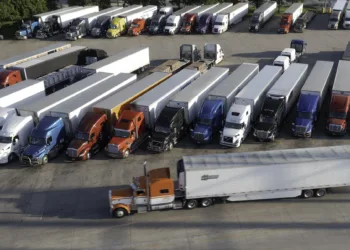Texas has made some strong developments in the cold chain supply chanel. Mexico continues to be the top trading partner with the U.S. with $226.4 billion worth of trade so far for the year, narrowly surpassing Canda. Across the state, cold-storage developers, produce importers, 3PLs, and tech-forward warehouse operators are pouring money into temperature-controlled infrastructure, turning Texas into one of the most influential cold-chain hubs in North America.
And it’s happening fast enough that the rest of the industry is starting to take notice.
New Jersey and California have been consistent powerhouses in cold chain. With proximity to pharmaceutical manufacturers and busy ports, but the newest competitor could be a sleeper.
Cold chain rewards location, and Texas has it in spades. The state sits on top of some of the most valuable freight arteries in the country: north-south interstates connecting to the Midwest, east-west lanes feeding the coasts, two of the busiest air cargo gateways in DFW and Houston, and a Gulf Coast port system that’s expanding at a breakneck pace.
Layer in the proximity to Mexico, where produce, proteins, and pharmaceuticals funnel across the border daily, and Texas becomes the natural front door for perishable goods moving into the U.S. interior. Laredo, Pharr, and McAllen are transforming from simple crossing points into sophisticated cold-chain ecosystems with inspection stations, ripening rooms, and temperature-controlled cross-docks designed to keep product moving.
It’s the kind of environment shippers dream about: high velocity, high connectivity, and plenty of room to scale.
What sets Texas apart isn’t the size of the expansion; it’s the sophistication of it.
New facilities aren’t just sealed boxes keeping lettuce from wilting. They’re packed with automation, dense sensor networks, and visibility systems that monitor every corner of the warehouse in real time. Operators are deploying AI-driven pallet tracking, forklift-vision systems that verify inventory movements automatically, and refrigeration setups engineered to survive blistering summers without temperature drift.
Earlier this year RealCold opened a 14 million cubic foot temperature-controlled warehouse near Austin. Tom Musgrave, Chief Operating Officer of RealCold, lauded the project stating “This is one of flagship facilities and we believe that what we’ve built is an opportunity to showcase our capabilities and extend our brand. One of the unique elements of the design was our focus on flexibility to ensure that we can serve a diverse array of customer needs and engineer solutions that are optimized for their businesses using our infrastructure.”
The solutions are becoming diverse and adaptable for all types of temperature-sensitive goods.
A major catalyst for Texas’ rise is happening on the demand side.
Online grocery isn’t slowing down. It’s stabilizing into a permanent consumer habit and it’s raising the bar for what the cold chain must deliver. A Mexico Business News article cited, “Nearly 30% of consumers ages 16 to 64 buy food online each week, according to a study by We Are Social and Meltwater. About 51% of consumers buy restaurant or prepared food through delivery platforms, and 43% purchase packaged food and beverages through e-commerce channels. Smartphone use dominates buying behavior, with 92% of users preferring mobile devices for online transactions.”
Groceries ordered online must be fresh, traceable, and delivered within tight windows, often traveling farther and sitting longer than they ever did in traditional retail logistics.
Mexico is seeing the same pressure, with agribusiness exporters racing to modernize packaging, cold-room handling, and reefer capacity as their products increasingly flow into e-commerce channels. And because so much of that produce moves through Texas first, any investments south of the border instantly ripple north.
Texas sits right at the intersection of these trends: cross-border perishables surging in volume, U.S. retailers needing more refrigerated capacity, and consumers demanding “supermarket quality” from their front-door deliveries.
For food shippers looking for access to the Midwest and East Coast, Texas is increasingly the logical staging ground. For retailers battling the cost and complexity of e-grocery fulfillment, Texas offers the scale and sophistication needed to compete. For pharmaceutical and life-science companies, it offers the compliance-minded infrastructure required for sensitive shipments.
And if current investment levels hold, the state won’t just be a major cold-chain player, it could become the defining cold-chain platform for North America’s next decade of growth.
The post Texas throws its hat in the ring for cold chain powerhouse appeared first on FreightWaves.






















